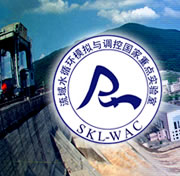智能管道—仪表化管道,能成为现实吗?
摘要:在英国,几百万千米的管道和电缆埋在街道下面。由于这些管道不是很容易看到或触摸到,所以如何监测其完整度和质量就成为一个挑战。如果其所有者了解关于这些管道的一些信息,那么就会在制定计划和管理计划时事半功倍。习惯上,一般会用昂贵并且非常局部的传感器来对他们进行不定期的监测。为了对设备网络有一个全面的了解,需要研究出一种更便宜的传感器,这样就可以允许大量的传感器被安装在管道里,因此,智能管道应运而生。本文着重于讲述一个尝试,即在一个地方埋有一小段标准智能管道,这个管道主要使用了现成的传感器和通信物件。这个尝试由于传感系统的限制,而很具有挑战性。人们会在填埋期间与填埋完之后,获取传感器的数据结果,来表明虽然为了使传感器小型化,更进一步的改进是必须的,但也可以说明现有的传感器可以应用于智能管道中。关键的被公认的挑战是这些传感器的功效以及如何使用不同的方法把数据传送回操作者手中。
Abstract: Several millions of kilometres of pipes and cables are buried beneath our streets in the UK. As they are not visible and easily accessible, the monitoring of their integrity as well as the quality of their contents is a challenge. Any information of these properties aids the utility owners in their planning and management of their maintenance regime. Traditionally, expensive and very localised sensors are used to provide irregular measurements of these properties. In order to have a complete picture of the utility network, cheaper sensors need to be investigated which would allow large numbers of small sensors to be incorporated into (or near to) the pipe leading to so-called smart pipes. This paper focuses on a novel trial where a short section of a prototype smart pipe was buried using mainly off-the-shelf sensors and communication elements. The challenges of such a burial are presented together with the limitations of the sensor system. Results from the sensors were obtained during and after burial indicating that off-the-shelf sensors can be used in a smart pipes system although further refinements are necessary in order to miniaturise these sensors. The key challenges identified were the powering of these sensors and the communication of the data to the operator using a range of different methods.

